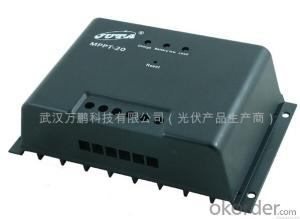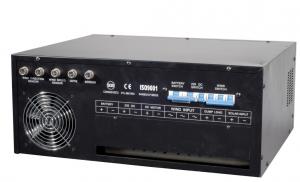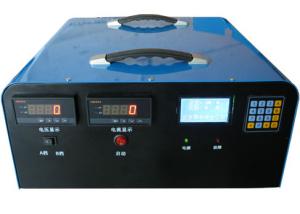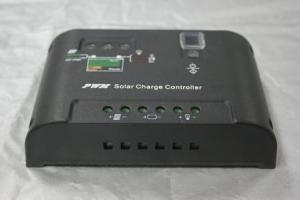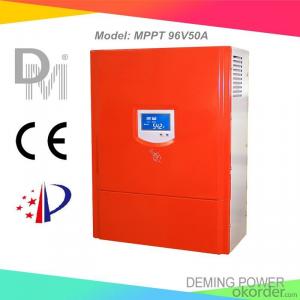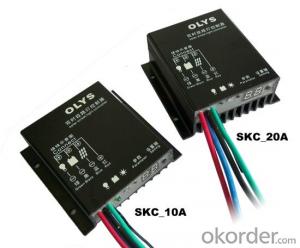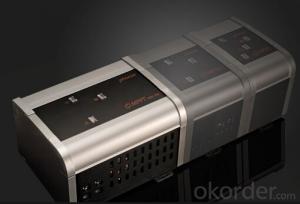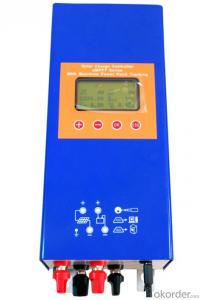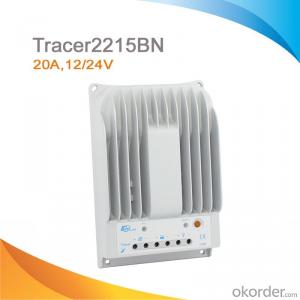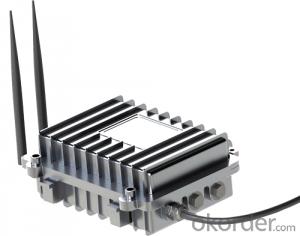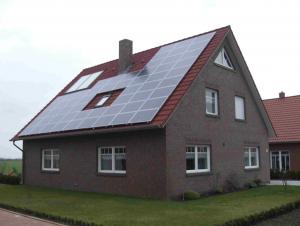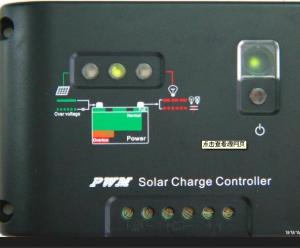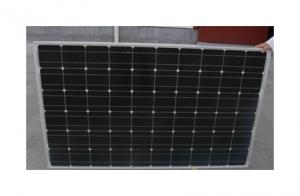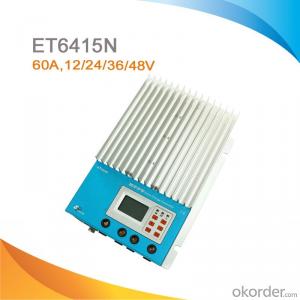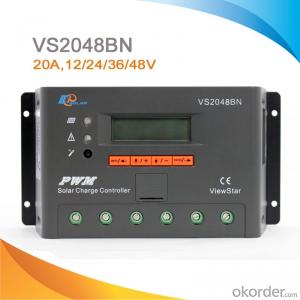Midnite Solar Controllers Maximum Power Tracking Solar Controller Model MPPT 20
- Loading Port:
- Shanghai
- Payment Terms:
- TT OR LC
- Min Order Qty:
- 5 unit
- Supply Capability:
- 150 unit/month
OKorder Service Pledge
OKorder Financial Service
You Might Also Like
1. Structure of MPPT Maximum Power Tracking Solar Controller Model MPPT 15/ MPPT 30
The controller is an indispensable part of solar system, this MPPT Maximum power tracking solar controller is remarkable, because it can adjust with intelligence the working voltage of solar panels, so that the solar panels can reach the maximum power spot of the V-A characteristics curve during the work. Compared with the common solar controller, this MPPt Maximum power tracking solar controller can increase the use ratio of the solar panels power by 10-30%.
2. Main Features of MPPT Maximum Power Tracking Solar Controller Model MPPT 20
· Protection against overcharging of the accumulator
· Protection against over discharging of the accumulator
· Protection against reverse discharging of the accumulator to solar panels
· Overload protection and short circuit protection
3. MPPT Maximum Power Tracking Solar Controller Model MPPT 20 Images
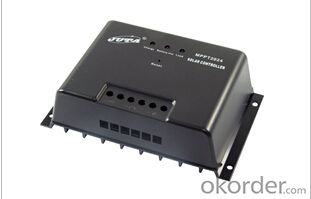
4. MPPT Maximum Power Tracking Solar Controller Model MPPT 20 Specification
Type | MPPT20-12/25 | MPPT20-24/50 |
Nominal Voltage | DC:12V | DC:24V |
Voltage scope available for Max. solar power tracking | 12-25V | 24-50V |
Max. open circuit voltage for solar energy | 25V | 50V |
Max. charging current | 20A(referring charging current from accumulator) | |
Max. discharging current | 20A | 20A |
No load losses | ≤8mA | ≤40mA |
Off voltage after full charging | 14V | 28V |
Off voltage when undervoltage | 10.5V | 21V |
Starting recovery voltage | 12.6V | 25.2V |
Efficiency | 95%~97% | |
5. FAQ
We have organized several common questions for our clients, which may help you sincerely:
a) How about your capacity?
We can produce 300,000 set inverter per year currently, 60,000 set solar energy charge controllers. And the product is sold towards domestic and Europe, Australia and Africa etc.
b) How to guarantee the quality of the products?
The company presses the ISO9000 quality management system control product quantity strictly, the export production all passes the relevant national company check (CE, ROHS), and get high evaluation of the customer.
c) How long can we receive the product after signing Sales Confirmation?
Generally speaking, if there is enough quantity of finished products which can meet the clients’ requirement, we can manage the delivery within three to five working days according to the instruction of the payment terms in the Sales Confirmation; if the products need some time to get ready, we will arrange the delivery as soon as possible after the manufacture.
- Q: What is a solar controller?
- Solar controller is used to control the charge and discharge and has a reverse charge protection, overcurrent protection, overload protection, short circuit protection, digital display parameters and other functions of electronic equipment. To select a solar controller, it is recommended to choose from the ENF website. Which includes the well-known domestic and foreign manufacturers of information and product information. Under normal circumstances the controller has waterproof protection measures. To choose according to different needs
- Q: Can a solar controller be used in a solar-powered water desalination system?
- Yes, a solar controller can be used in a solar-powered water desalination system. The solar controller is responsible for regulating and optimizing the energy flow from the solar panels to the system, ensuring efficient operation and protecting the batteries from overcharging or discharging. In a solar-powered water desalination system, the solar controller would play a crucial role in managing the energy supply to power the desalination process, making it an essential component for effective and sustainable operation.
- Q: Can a solar controller be used in a solar-powered electric car racing system?
- Yes, a solar controller can be used in a solar-powered electric car racing system. A solar controller regulates the charging and discharging of batteries in a solar power system. In a solar-powered electric car racing system, the solar controller would effectively manage the flow of power from the solar panels to the batteries, ensuring efficient energy storage and utilization for the car's performance.
- Q: What is the equalization charging mode of a solar controller?
- The equalization charging mode of a solar controller is a function that periodically applies a higher voltage to the battery bank to balance the charge levels of individual cells or batteries. This helps to prevent stratification and sulfation, ensuring the longevity and optimal performance of the battery bank.
- Q: What is the role of a solar controller in preventing damage to the solar panels from lightning strikes?
- To prevent damage to solar panels from lightning strikes, a solar controller serves as a protective shield, separating the panels from the electrical surges generated by lightning. Functioning as a charge controller, the solar controller regulates the flow of electricity from the panels to the battery or grid. When lightning strikes, a significant amount of electrical energy is discharged, posing a threat to electronic devices, including solar panels. The solar controller plays a pivotal role in safeguarding the panels by implementing various protective mechanisms. Firstly, the solar controller typically incorporates surge protection features capable of identifying and diverting excessive voltage resulting from lightning strikes. Acting as a buffer, it prevents the surge from reaching and harming the panels. By absorbing and dissipating the surplus energy, the controller ensures a stable and safe voltage level for the panels. Moreover, advanced solar controllers may include grounding systems. These systems establish a low-resistance pathway for electrical surges to travel safely into the ground, avoiding contact with the solar panels altogether. By redirecting the electrical energy produced by lightning away from the panels, the controller minimizes the risk of damage. Furthermore, solar controllers often possess built-in monitoring capabilities. They can detect alterations in electrical parameters, such as voltage or current, and swiftly respond to abnormal conditions. In the event of a lightning strike or surge, the controller can temporarily shut down the system to safeguard the panels until the threat has subsided. In essence, the solar controller serves as a critical defense against lightning strikes, preventing harm to solar panels by diverting, dissipating, or grounding excessive electrical energy. Its surge protection, grounding, and monitoring features collaborate to shield the panels and ensure their durability and efficiency.
- Q: Can a solar controller be used with a solar-powered water pumping system?
- Yes, a solar controller can be used with a solar-powered water pumping system. A solar controller helps regulate and optimize the charging and discharging of the batteries in the system, ensuring efficient power utilization and protection against overcharging or discharging. This is especially important in a water pumping system as it helps maintain a steady flow of water by managing the energy input from the solar panels.
- Q: Solar controller 10a, a represents what
- In addition, the general controller will be marked as single-phase or three-phase power, according to P = UI (power = voltage * current) this formula, you can infer the corresponding power, in the choice of output devices (such as pumps) can not exceed this power.
- Q: Can a solar controller be used with a battery bank?
- Yes, a solar controller can be used with a battery bank. A solar controller helps regulate the charging and discharging of batteries connected to a solar panel system, ensuring optimal performance and preventing overcharging or deep discharge.
- Q: Can a solar controller be used with a solar-powered office building?
- Yes, a solar controller can be used with a solar-powered office building. A solar controller regulates the flow of electricity from the solar panels to the building's electrical system, ensuring optimal performance and preventing overcharging of batteries. It helps monitor and manage the solar power generated, making it suitable for use in a solar-powered office building.
- Q: Can a solar controller be used with a solar-powered charging station for electronic devices?
- Yes, a solar controller can be used with a solar-powered charging station for electronic devices. The solar controller regulates the voltage and current from the solar panels to ensure efficient and safe charging of the electronic devices. It helps optimize the charging process and protect the devices from overcharging or any voltage fluctuations.
Send your message to us
Midnite Solar Controllers Maximum Power Tracking Solar Controller Model MPPT 20
- Loading Port:
- Shanghai
- Payment Terms:
- TT OR LC
- Min Order Qty:
- 5 unit
- Supply Capability:
- 150 unit/month
OKorder Service Pledge
OKorder Financial Service
Similar products
Hot products
Hot Searches
Related keywords
